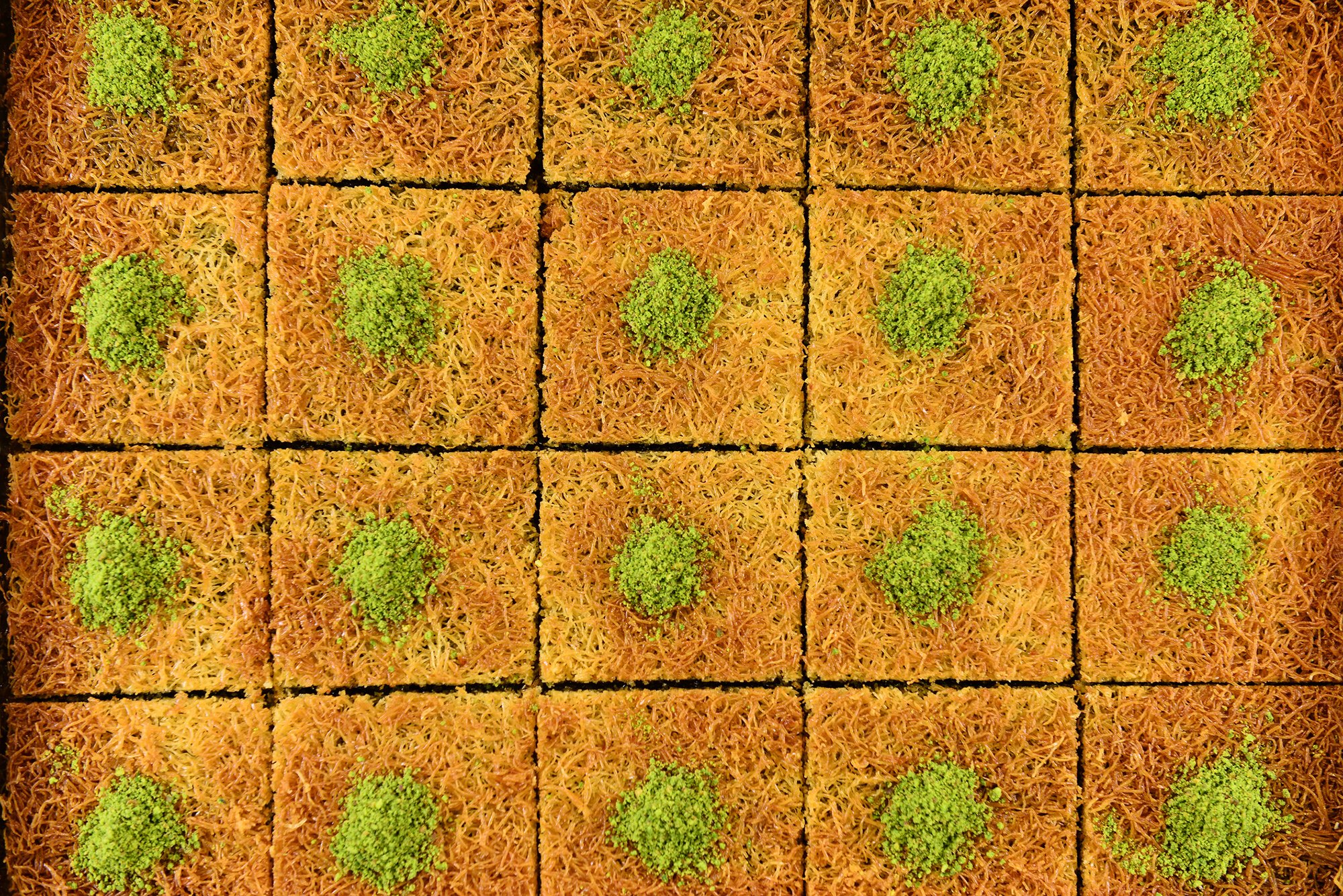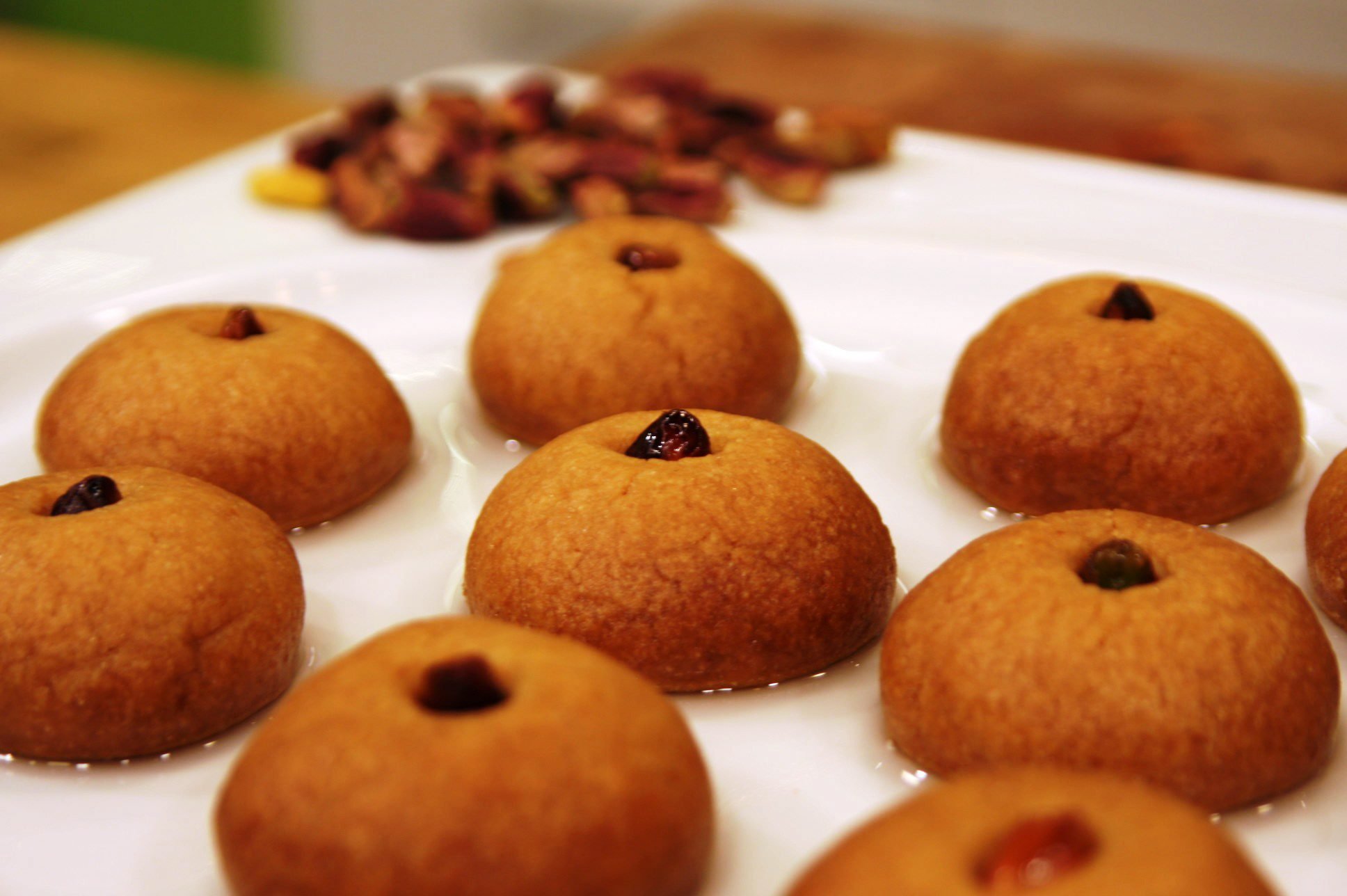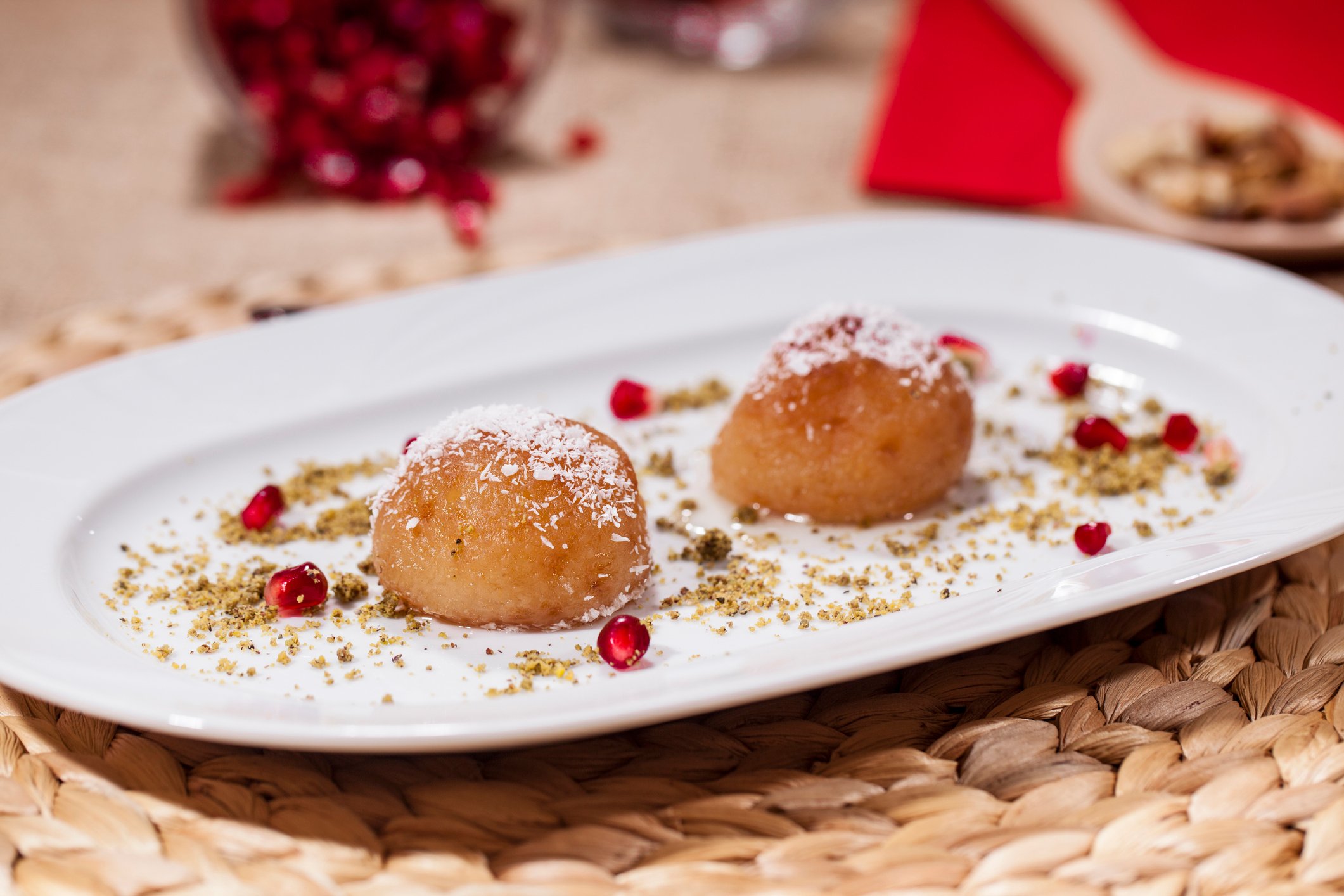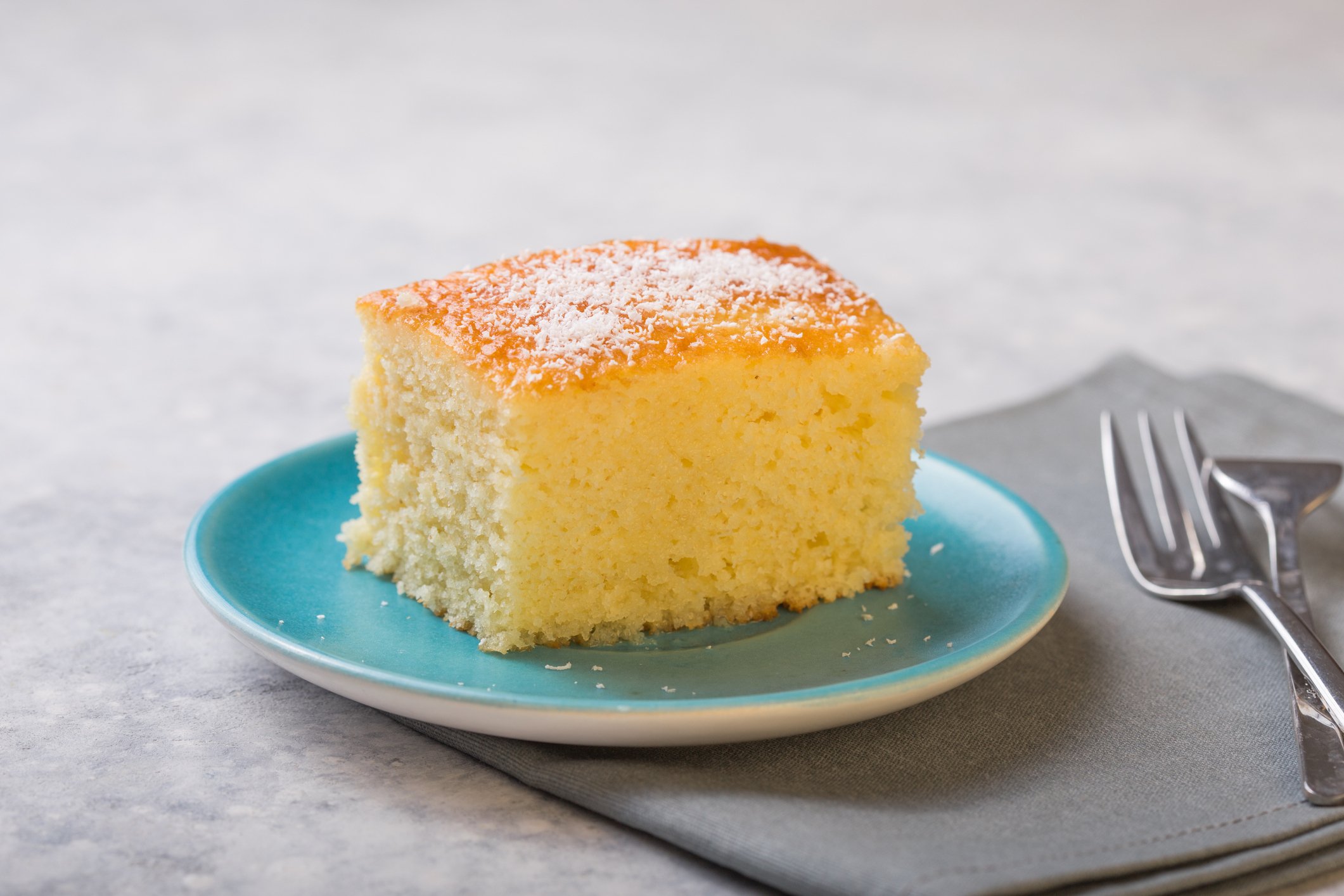Turkish cuisine is rich in many ways and saying that any of the desserts mentioned below are exclusively for Ramadan Bayram, also known as Eid al-Fitr, would be wrong. However, as some of these require quite a bit of elbow grease and time – and sometimes dexterity – it makes sense that we see them made more often for special occasions and holidays.
The coronavirus pandemic has not only taken away from us our busy and crowded iftar get-togethers but also visits to our loved ones and relatives that would serve up a variety of these yummy desserts.
There are, of course, many more sweet dishes that could be considered a Ramadan Bayram dessert, but here we have the top selection of them.
Let’s start with a Turkish classic, for any occasion.
Baklava
Hold on, you might say, but I can have baklava any time of the year! Yes, that is indeed true but have you ever eaten homemade baklava? When done right it is much lighter, crunchier and richer in taste than the ones you can buy at any Turkish bakery. As I mentioned earlier, sometimes you need certain skills, and one of those is to roll out the dough for this multilayer treat as thinly as possible. I remember the days fondly just before Ramadan Bayram when we’d sit with my aunt at the kitchen table, first rolling out the dough a bit and then handing it over to her. With a flick of the hand, she’d expand it to dimensions I had not dared to try myself. I’m not discouraging you from giving it a shot – it will definitely be worth it, no matter how thick the layers may turn out – but keep in mind they might not be picture perfect on your first try.
I’d like to insert a small “but” here. There are ready-made baklava phyllo pastries you can buy at stores in Turkey. They are nothing like the homemade ones but are a quick and easy way to give making your own baklava a shot!

Kadayıf
The closest contender to baklava is this crunchy but syrupy dessert here. It is made from very a thin noodle-like pastry called “tel kadayıf” in Turkish or “kunafa” in the Arabic speaking world. While “künefe” in Turkish is a different dessert in itself, the kadayıf I mention here is quite simple if you get your hands on any “tel kadayıf” from your local “yufkacı” or Turkish specialty store.
Ingredients
- 500 grams “tel kadayıf”
- 200 grams butter
- 300 grams nuts of your choice (crushed)
- a handful of whole nuts (optional)
For the syrup
- 500 milliliters water
- 400 grams sugar
- 1 teaspoon lemon juice
Instructions
Add the sugar to the water and boil it for 10 minutes. Stir in the lemon juice and let it cool off. Meanwhile, take the kadayıf and pour the melted butter over it. Mix it so that the pastry is fully covered in butter. Take half of that onto your baking tray of choice and press it down as much as possible. Spread the crushed nuts – hazelnuts, walnuts or pistachios – onto the pressed layer and lay the remaining kadayıf on top it. Press the kadayıf again to make the dessert as dense as possible. If you want to, press the whole nuts into the kadayıf for a decorative touch and bake it at 180 degrees Celsius (about 350 degrees Fahrenheit) until it turns a golden brown. Depending on your oven your baking time may change – mine takes about 20 minutes. Once out of the oven, cut the dessert into your desired shape, like pizza slices, chevrons or just simple squares. Pour all of the syrup onto the baking tin as equally as possible and let it rest for at least an hour.
Tips
It is essential that the syrup has cooled off by the time the dessert comes out of the oven. Otherwise, it could get all doughy, which nobody wants.
The order we layered the dessert here can be reversed: first put the decorative nuts on the pan, then the kadayıf, the crushed nuts and then the kadayıf again. Once out of the oven, it needs to be turned upside down (or when you want to serve it). It does look neater, but I have burned my arms enough times to tell you: It tastes amazing either way!

Şekerpare
Speaking of syrup, here is my personal favorite to make – and eat. We have shared this recipe with you before and can only encourage you to give it a shot again for Ramadan Bayram. It is basically a semi-sweet cookie, usually decorated with a nut on top, but not necessarily, and doused in syrup. It just melts in your mouth and usually, one piece is enough to fight off that urge for something sweet. And speaking of cookies…

Kemalpaşa dessert
This dessert gets its name from the Mustafakemalpaşa district of northwestern Bursa province, where this dessert is made on a daily basis. Kemalpaşa can be found in pretty much every store in Turkey once Ramadan peaks around the corner. The only thing that you need to add to them is the syrup. But considering that this is the fluffier brother of şekerpare it would be a shame not to show you how to make this at home.
Ingredients
For the dough
- 1 egg
- 100 milliliters oil
- 100 grams yogurt
- 160 grams semolina
- 1 packet vanilla sugar (10 grams)
- 1 packet baking powder (10 grams)
- 150-200 grams flour
For the syrup
- 500 milliliters water
- 300 grams sugar
- 1 teaspoon lemon juice
Instructions
As usual, we start by making the syrup by mixing water and sugar and letting it boil for five to10 minutes. Then turn off the heat, add the lemon juice, give it a good stir and let it cool off.
In a bowl add the egg, oil and yogurt and give that a mix. Add the semolina, baking powder and vanilla and mix. Gradually add flour until you get a non-sticky dough. Depending on the yogurt you use, you might not need the full amount of flour or might have to add more. As soon as the dough loses that stickiness, stop adding the flour.
Pinch off walnut-sized pieces of the dough, roll them and place them onto a baking sheet and bake them at 170-180 degrees Celsius for about 25 minutes or until they are golden brown.
With the help of a ladle, spread the syrup all over them. Let the dessert soak in the syrup and serve.
Tip
Many like to add shredded coconut onto them when serving.

Revani
This one I consider to be the least hassle to make, as I most likely have everything I need for it at home at any given time. This dessert is said to have originated from the Ottoman palace kitchen. It makes for a spongey cake that is finger-licking good.
Ingredients
For the dough
- 3 eggs
- 75 grams sugar
- 100 milliliters oil
- 150 grams semolina
- 150 grams flour
- 200 milliliters yogurt
- 1 packet baking powder (10 grams)
- 1 packet vanilla sugar (10 grams)
- Shredded coconut to decorate
For the syrup
- 300 grams sugar
- 600 millilters water
- 2 teaspoons lemon juice
Instructions
Always start with the syrup. Boil the sugar and water together for five to10 minutes and add the lemon juice. Then let it cool off.
Move onto preparing the dough. Mix the eggs and sugar until the sugar dissolves and the mixture turns light and fluffy. Add the oil, yogurt and semolina and give it a good stir. In a separate bowl, mix the baking powder, flour and vanilla, and then add it to the dough mixture. Once incorporated, pour the batter into your baking tray of choice and bake it at 170-180 degrees Celsius for 25-30 minutes or until the dough is baked through and golden brown.
Once out of the oven, let it cool off for five minutes and directly add the syrup all over it. As it cools off, it will soak up in all of the syrup and can be served with a bit of shredded coconut on top.
Tip
I prefer to make this on a wider baking tray to get thinner pieces out of it. This is a great way to serve decently sized pieces to everyone that might visit you, once this virus situation gets better, of course.
Last Updated on May 28, 2020 4:43 pm by Yasemin Nicola Sakay










Discussion about this post